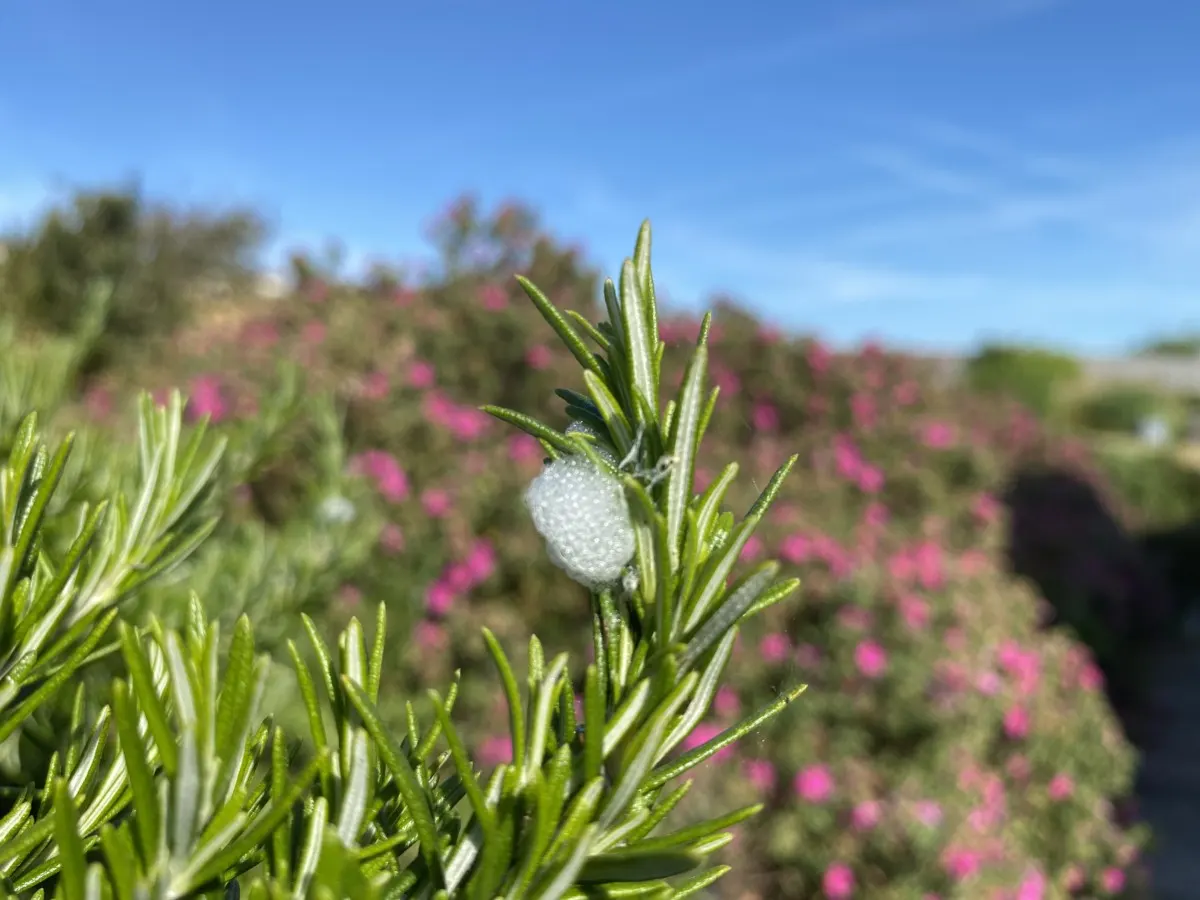
Frog spit, snake spit or cuckoo spit. We all grew up seeing these blobs of ‘spit’ on plants in our backyard gardens or in the field we were playing in. Subsequently, everyone seems to have a different name for these bubble masses clinging to plants in mid to late spring.
But what most of us didn’t know for the longest time is that frogs, snakes or birds don’t cause these frothy masses.
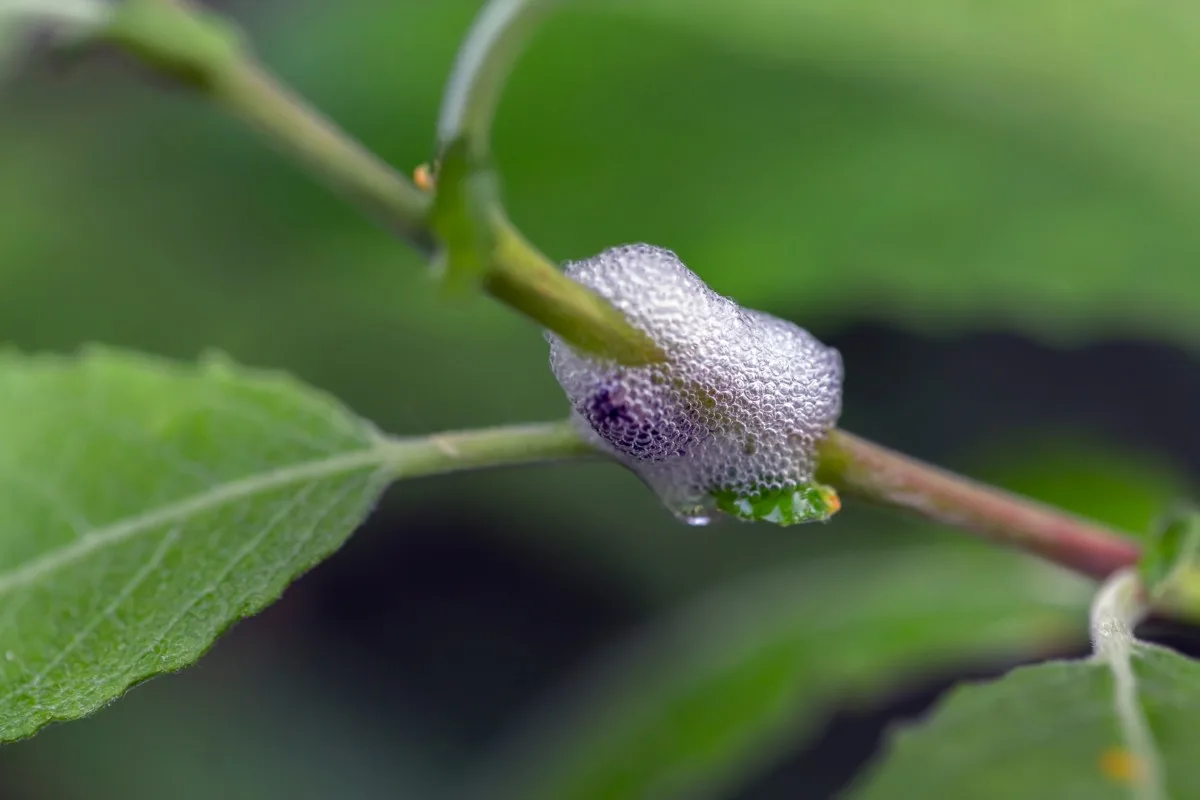
Rather they are the secretions of a tiny bug, the froghopper. They are more commonly known as spittlebugs because of their unusual practice of hiding among tiny bubble houses in their nymph stage. And I’ll just point out now that this “spit” doesn’t come out of their mouth.
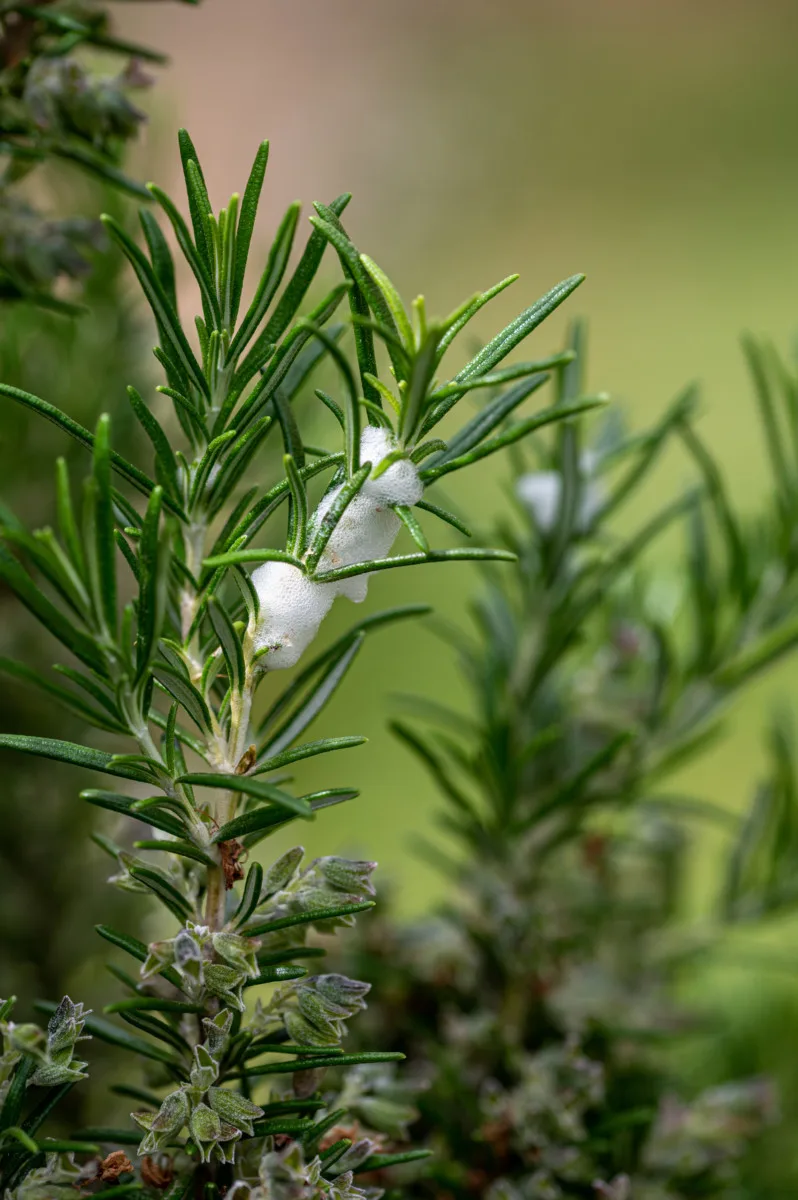
If I had to guess, you’re here because there are bubble masses on some of the plants in your garden. As gardeners, finding a new species of insect in the garden has us wondering if they will destroy what we’re growing or at the very least eat the other bugs doing the destroying.
Let’s discuss this tiny little bug.
The Spittlebug – Friend or Foe?
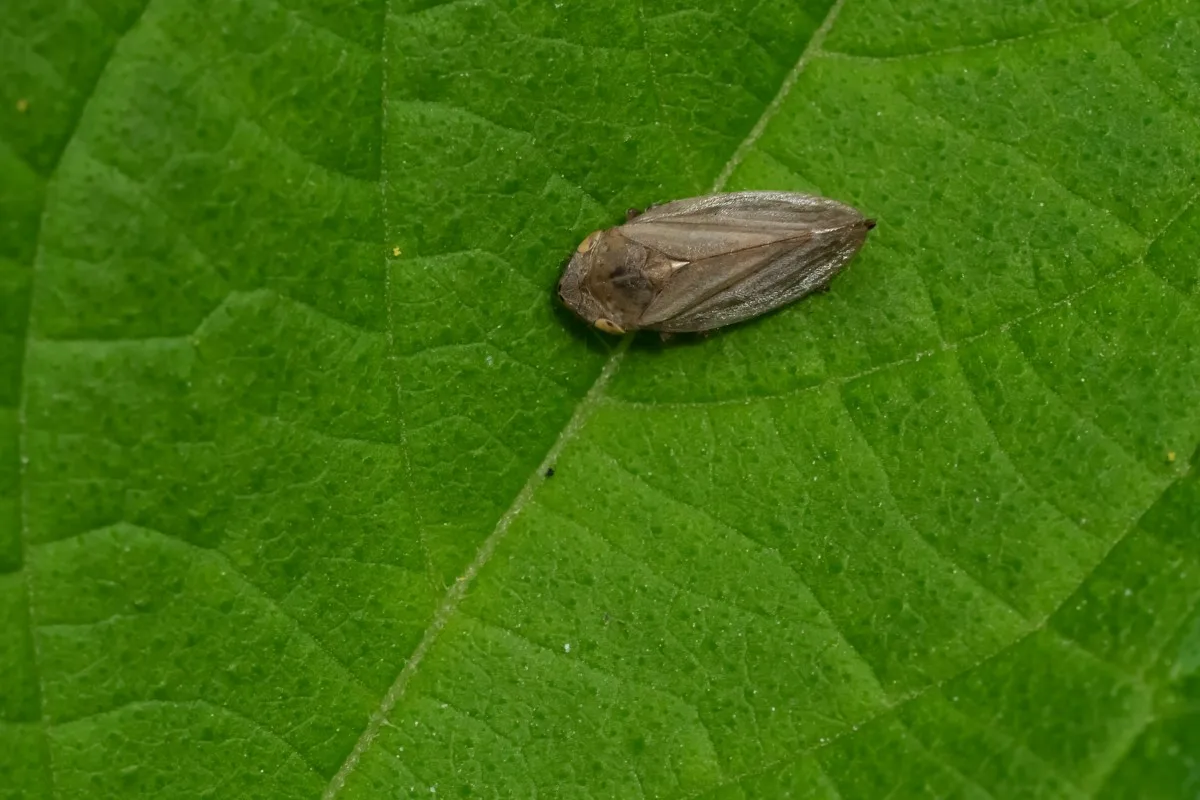
Froghoppers, of the Cercopoidea family, are named so because of their ability to leap surprisingly large distances in relation to their size. Some of them can leap a hundred times their length. To put that into perspective, Mike Powell is the current world record holder for the long jump – a sprawling 29 feet and change. Standing at 6’ 2”, Mike can only jump slightly less than five times his length.
Not too shabby for a bug.
There are over thirty species of spittlebug in North America, but by far, the most common is the meadow spittlebug or Philaenus spumarius.
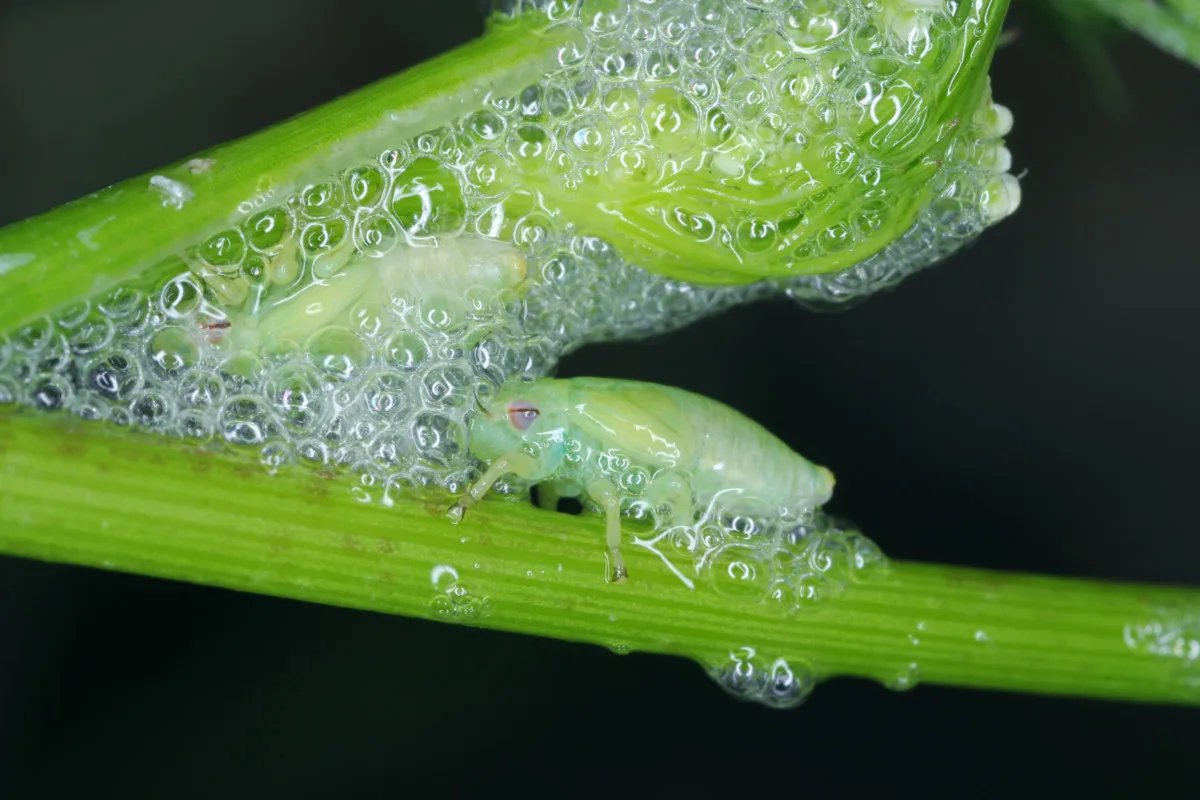
These froghoppers look a bit like another familiar hopping garden insect – the leafhopper. (We’re surprisingly uncreative in our naming of the animal kingdom.) While leafhoppers can cause significant damage, depending on the species, you can rest assured that finding spittlebug masses in your garden isn’t a worry.
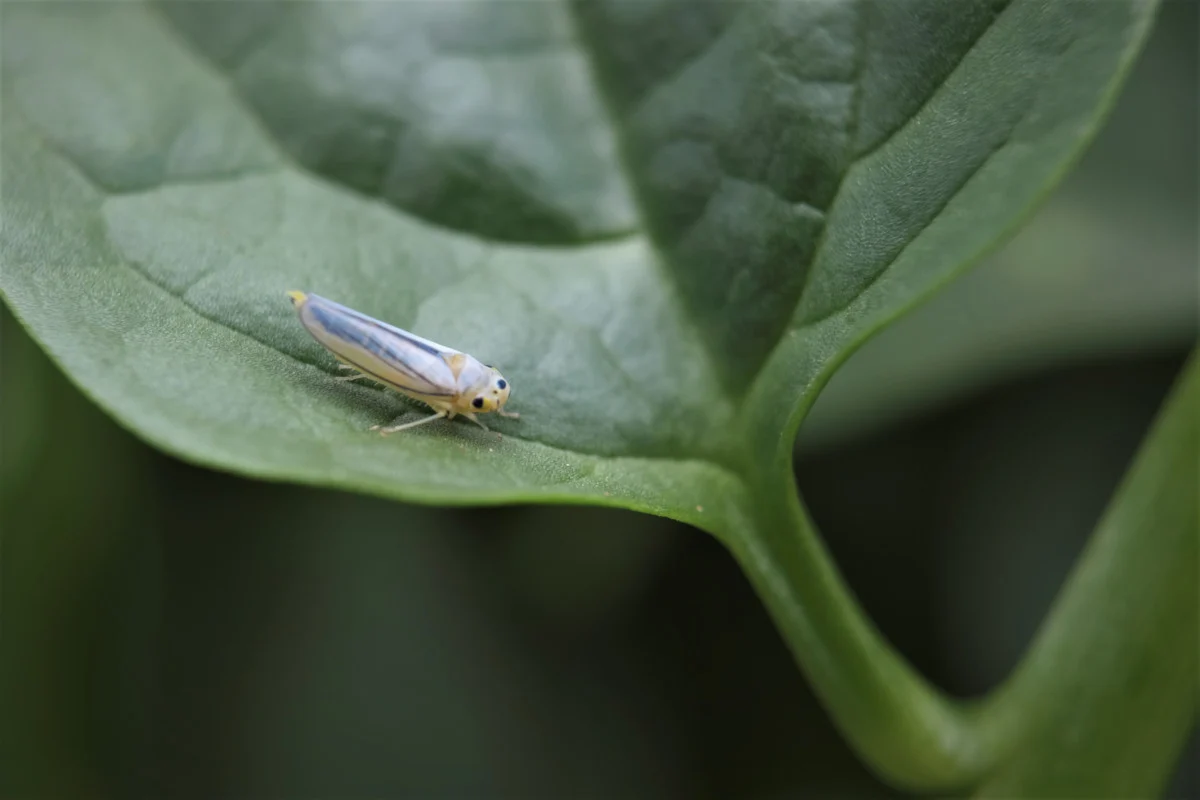
Everything about this tiny bug is cute. Wrapped within that mass of bubbles is a tiny, spittlebug nymph that looks more like a cartoon than a real, live insect.
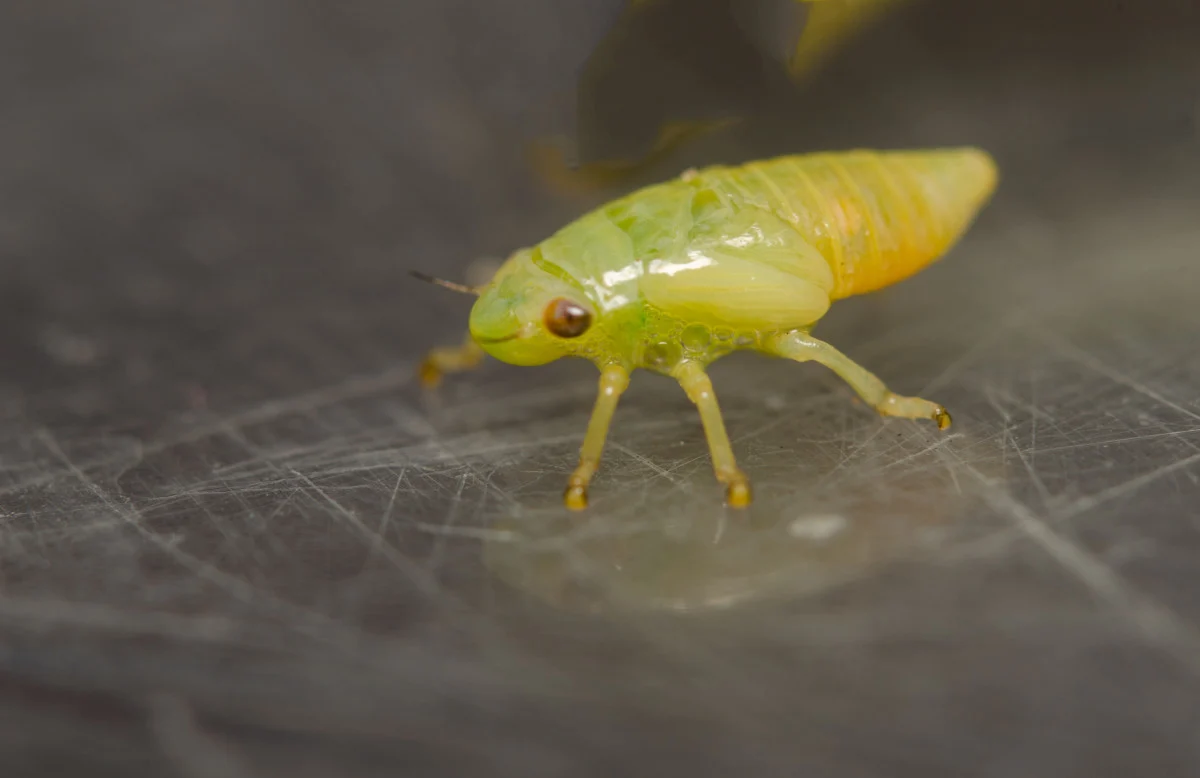
You can put down the bottle of neem oil and your homemade insecticidal soap. These charming little insects won’t harm your plants. Like leafhoppers and aphids, they are sap-sucking insects, but they rarely consume enough to damage the plant. This is because they drink the watery sap in plants called xylem. The phloem is the sap that carries most of the nutrients a plant needs.
This xylem is key in producing their little bubble homes. As the nymph eats the xylem, the excess is excreted (ahem) out the rear exit, where the bug will pump its legs, creating a foamy, bubbly home.
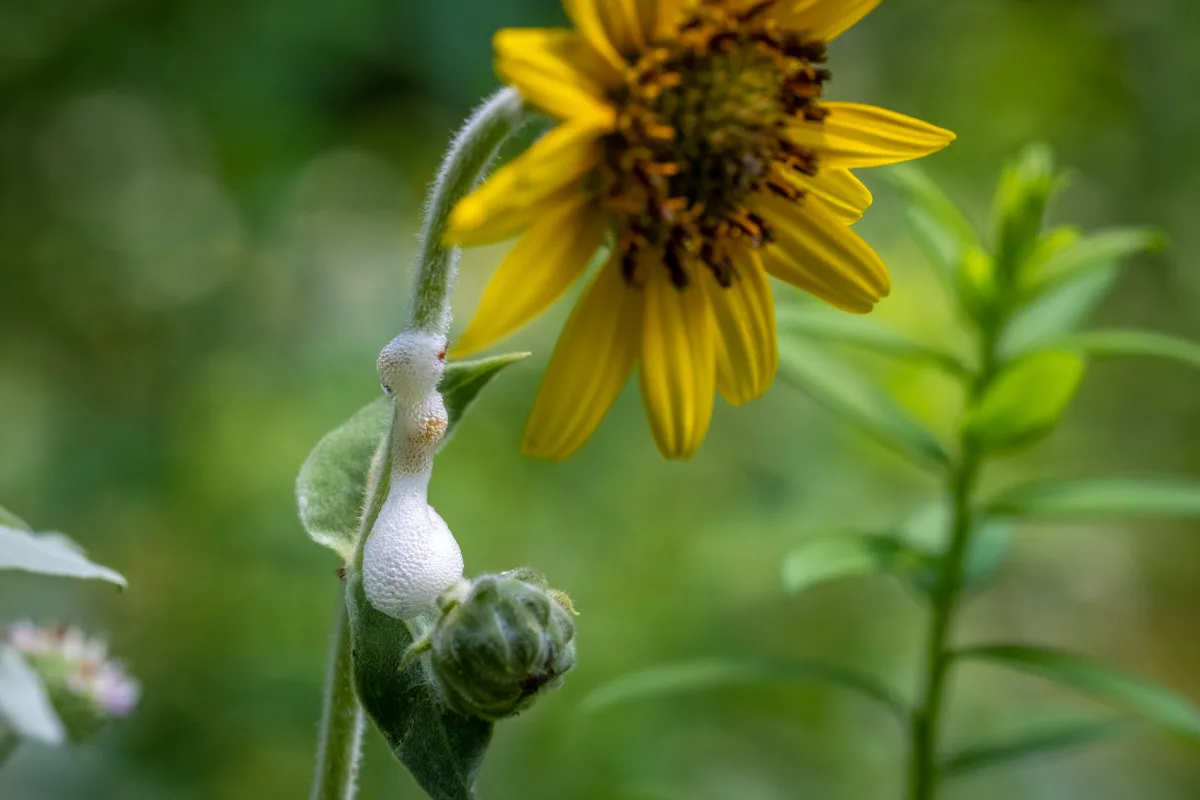
Why Do Spittlebugs Make These Nests?
People often wonder if the bugs lay their eggs in these spittle blobs, but you may be surprised to learn that isn’t the case. This moist covering serves a few purposes.
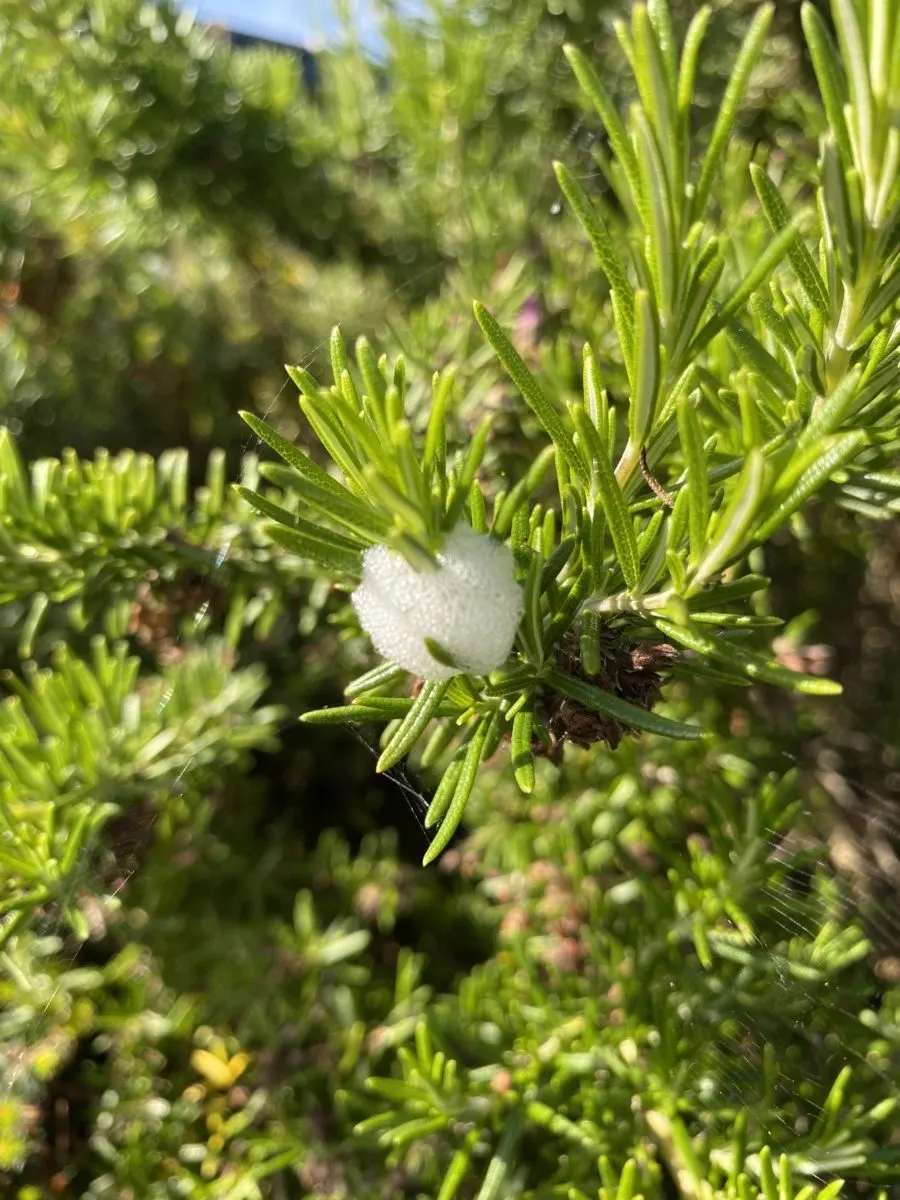
The secreted liquid has a bitter taste, protecting the bug from being eaten by predators. The young nymphs are soft-bodied and require this wet habitat to survive, otherwise, they would dry up and die. And finally, the air-filled bubbles protect the insect from cooler nighttime temperatures.
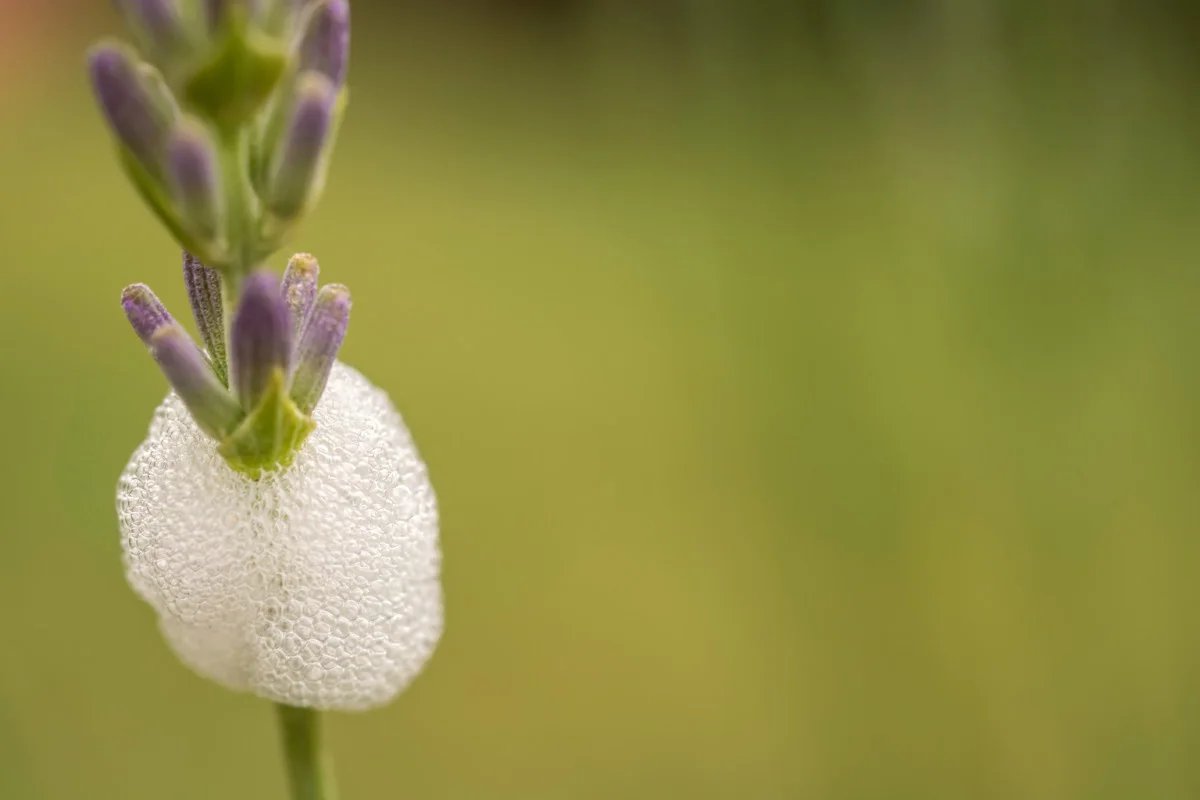
Spittlebug Life Cycle
The bubbles you see in the spring or early summer are from the nymphs, who will molt several times in their wet home before emerging as adults. The adults, depending on the species, are usually tan, brown or gray. And you probably pass right by them in the garden without even noticing them.
The females return in the fall to lay eggs on the undersides of leaves and the stems of plants, where the eggs will winter over. The following spring, as the tiny nymphs emerge, you will see the next generation’s houses popping up all over your landscape.
What to do About Spittlebugs
As spittlebugs rarely cause lasting harm, there isn’t anything to be done with them. It’s best to just let them be. However, if you really don’t like having spittle blobs all over your roses, or you don’t relish the idea of getting insect butt-juice on your hands whenever you’re picking flowers, you can spray the bubble nests away with your hose.
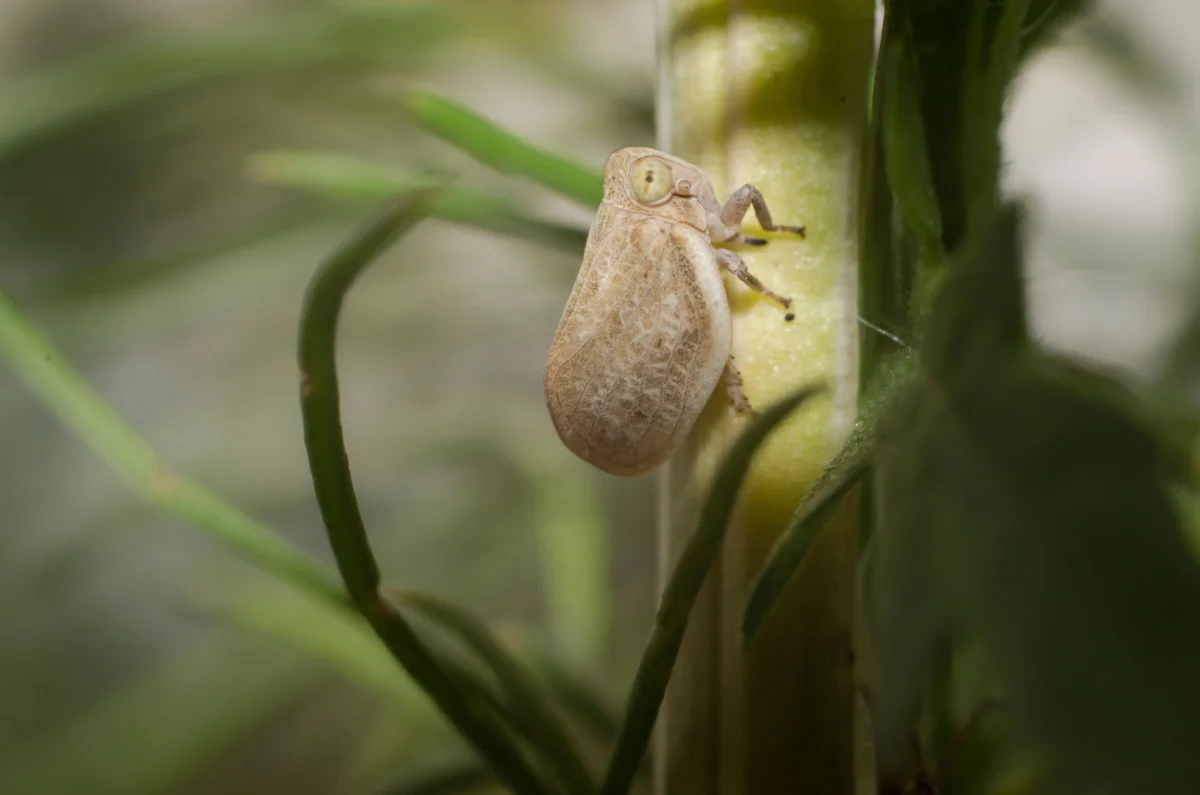
This solution is temporary, however, as it won’t kill the insects, and they will just set up camp again wherever they end up landing.
Spittlebug Sightings in the UK
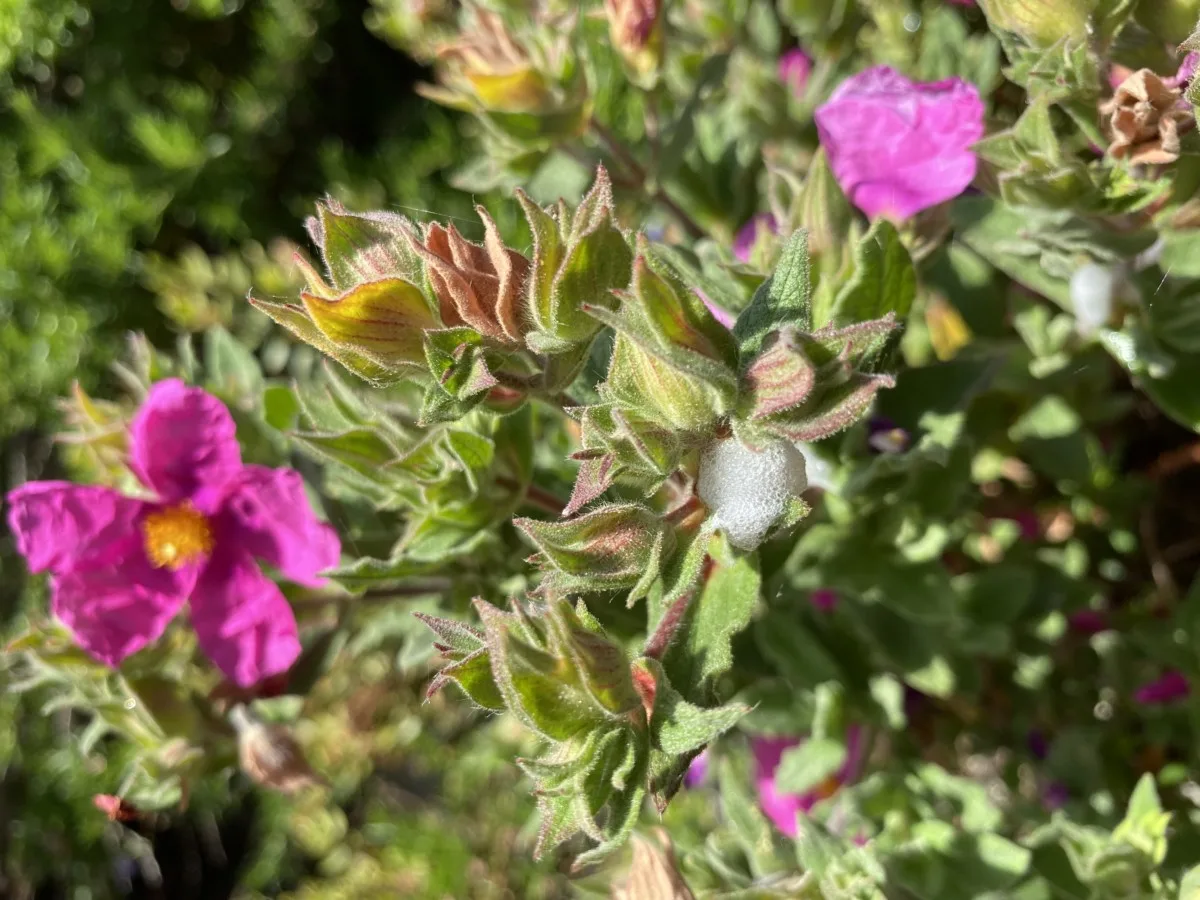
If you live in the UK, take note of the spittlebug nests you find. The devastating Xylella fastidiosa bacteria, responsible for the current destruction of olive orchards in Italy, is carried by certain species of spittlebugs. While this agricultural threat hasn’t yet reached the UK, scientists there want to keep a close eye on the spittlebug population.
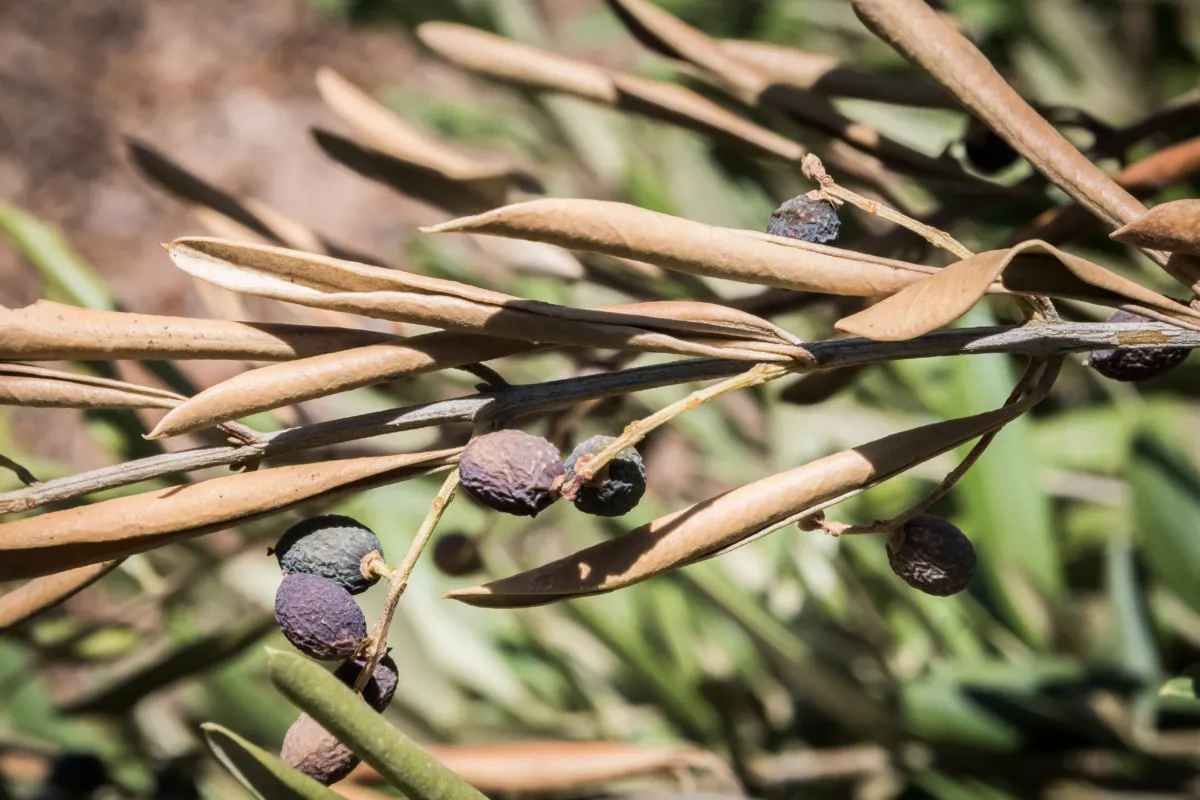
You can help with their studies by snapping photos of the spittlebug nests you find and report them through this website hosted by the University of Sussex.
Scientists are tracking their movement and learning more about the plant preferences of these bugs with the hopes that they can prevent this bacteria from wreaking further havoc on the olive industry and other plants.
It’s important to note that they are not asking people to destroy the spittlebug nests, merely to report sightings of them.
Hopefully, with a watchful eye, we can keep this harmless little bug harmless.

Get the famous Rural Sprout newsletter delivered to your inbox.
Including Sunday musings from our editor, Tracey, as well as “What’s Up Wednesday” our roundup of what’s in season and new article updates and alerts.

